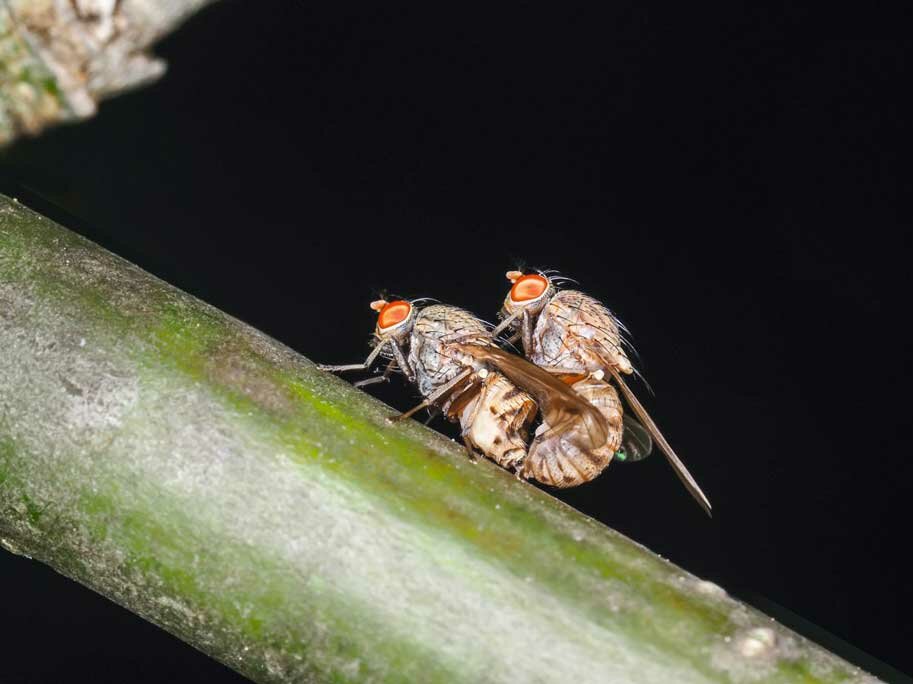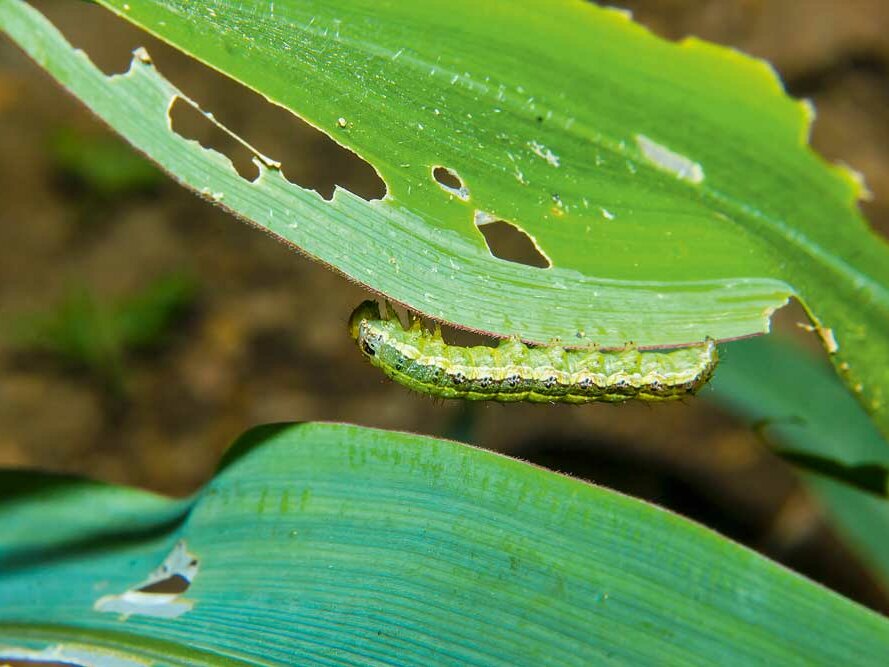Crop protection: When insects fight themselves
Interview with Prof. Dr. Marc Schetelig, Giessen University
The call for alternatives to insecticides in the control of insect pests is growing louder. The need for this is illustrated by the example of the cherry vinegar fly, which only immigrated to Europe in 2008 and can now cause catastrophic damage in fruit and wine growing.
One possibility has been known in agriculture for almost 80 years: insect males are sterilised, released and thus reduce a population. So far, this has often been done by irradiation; recently, there have also been trials or at least announcements of trials with "classical" genetic engineering. Methods such as CRISPR/Cas could facilitate this and also accelerate it enormously via the so-called "gene drive". But the questions that arise are as diverse as the possibilities they offer.
Professor Schetelig, insect pests play a greater role in other regions of the world than in Europe. Why should we also look at new ways of controlling them?
When looking for new ways and discussing control options, it makes sense to think about two areas together: human health and agriculture. European authorities are already warning about infections with malaria, dengue and yellow fever, all of which are transmitted by insects such as the Asian tiger mosquito, which is now also established in Germany.
In agriculture, we are experiencing an increase in invasive species: the European environmental agency speaks of about 10,000. At the same time, the possibilities for chemical control continue to diminish. This means that we need new approaches that protect biodiversity at the same time. One of these is to let the vector and harmful insects eliminate themselves.
What does such control look like?
The principle is based on the mass production of sterile males that are released in affected regions. They mate with the females, but no offspring are produced. If this is repeated a few times, an insect population can be significantly reduced. This Sterile Insect Technique (SIT) can be described as a kind of "specific self-destruction". It has been known for about 80 years. In the USA, it was used 75 years ago to eliminate the New World screwworm fly, a cattle parasite, and 50 years ago to combat the Mediterranean fruit fly. SIT has also been successfully used against the tsetse fly (carrier of sleeping sickness) and the Anopheles mosquito (malaria).
What are the new perspectives today?
Classically, the strains for producing sterile males are produced by classical mutagenesis like radiation. This is comparable to plant breeding. CRISPR/Cas and comparable new genetic technologies could make this process more targeted, simplify and accelerate it. A major challenge in SIT is the separation of males and females in the production of the sterile insects. For this "sexing", which you also know from chicks and which is currently mainly done manually for many new insect species, genome editing could play a decisive role in making SIT accessible for these species.
Are there any approaches beyond that?
Genome editing opens up a new pathway of insect control: the "gene drive". Normally, 50 % of a gene is passed on to the offspring. With the gene drive, it is 100 %. This means that the rules of inheritance are suspended. If, for example, a gene that is relevant for reproduction is deliberately switched off, a population quickly collapses. Research on gene drive has concentrated on the Anopheles mosquito, the vector of malaria. There are also approaches that are not intended to reduce the insect population, but to prevent the mosquito from transmitting the disease. Then new populations would not have to be constantly released into the field. Enthusiasm for this mechanism continues unabated, but it must be remembered that a lot of experimental data is needed for release. And regulating gene drives is not easy either. Science needs to understand and test more before release experiments seem possible.
This immediately raises the question of risks that we may not even know about.
There is the risk of overestimating our understanding of gene functions. We often know one or two of them, whereas the gene works in a whole regulatory network. The question is: does it matter? If an insect population is to be exchanged for another with new characteristics, that is an issue. If, on the other hand, "only" a population is to be reduced, as in the case of male sterile insects, the issue is less relevant. They are sterile, do not remain permanently in the environment and do not pass on their genes either. Such a reduction of insects is already carried out on a large scale by chemicals, but not as specifically as is possible with SIT.
What about the approval of such new methods?
Genome-edited insects fall under genetic engineering law in Europe. Whether this also applies to sterile males, which according to the biological definition (because sterile) are no longer organisms at all, is an interesting question. The classical genetic sexing strains are not genetically modified organisms. In contrast, the classification of genome editing as "genetic engineering" is a real stumbling block to innovation. In the case of gene drive insects, there are two additional aspects: firstly, they do not stop at borders. Conflicts could arise from different regulations. On the other hand, there are also trade issues, because GMO insects are also found inside fruits, for example, and are thus considered "contamination", even if they are below the maximum GMO limits for products with labels such as "without genetic engineering".
What does the public say when insects are released in large quantities? And still genetically modified?
There is little experience on this so far - and the existing ones mostly involve mosquitoes. In the US state of New York, local authorities banned the release of genetically modified cabbage cockroaches a few years ago, even though they had a permit. In Florida, a company that wanted to release mosquitoes was hit. In Brazil, on the other hand, the use of genetically modified tiger mosquitoes was successful thanks to extensive public participation. And large-scale releases of GM mosquitoes have now begun in Florida in 2021 to reduce dengue vectors. Recently, genetically modified armyworms have also been used in Brazil. This butterfly can cause catastrophic damage, especially to maize.
Only an honest and open discussion can create the trust that new technologies need. SIT is time-tested, developed with classical genetic methods. The new genetic methods could help not only to improve such a technology, but also to make it accessible to other pests. Therefore, we are keen to test these technologies with all stakeholders for opportunities and risks. However, without prejudices and ideologies, which always hinder a meaningful discussion.
Is a positive conclusion possible?
The release of modified insects is a promising strategy to control insects in a sustainable and species-specific way. It avoids the negative consequences of insecticides and allows for area-wide, targeted control without side effects. "Modified" can mean many things in this context: from the classic "male-sterile" approach with irradiation to population replacement via gene drive. What is important, however, is a very rigorous risk assessment of the different systems and a case-by-case consideration. After all, any technology produced with classical mutagenesis or novel tools such as genome editing can have both advantages and disadvantages. It is our task to describe these as well as possible in advance.
The questions were asked by Thomas Preusse, DLG Mitteilungen
The question of money
Farmers may ask themselves: Who will pay for such a control of insect pests? After all, it cannot be assigned individually to each farm or field, but is related to an entire region. And in fact, this is one of the open questions in some EU countries. In other countries it has been solved for decades because the farms and areas are many times larger. Releases are coordinated by farmers and the state and contribute to a permanent low-cost control of some pests. Spain and Israel are already showing that SIT works. In general, the farmer also pays for this control, whether in South America or Europe.





